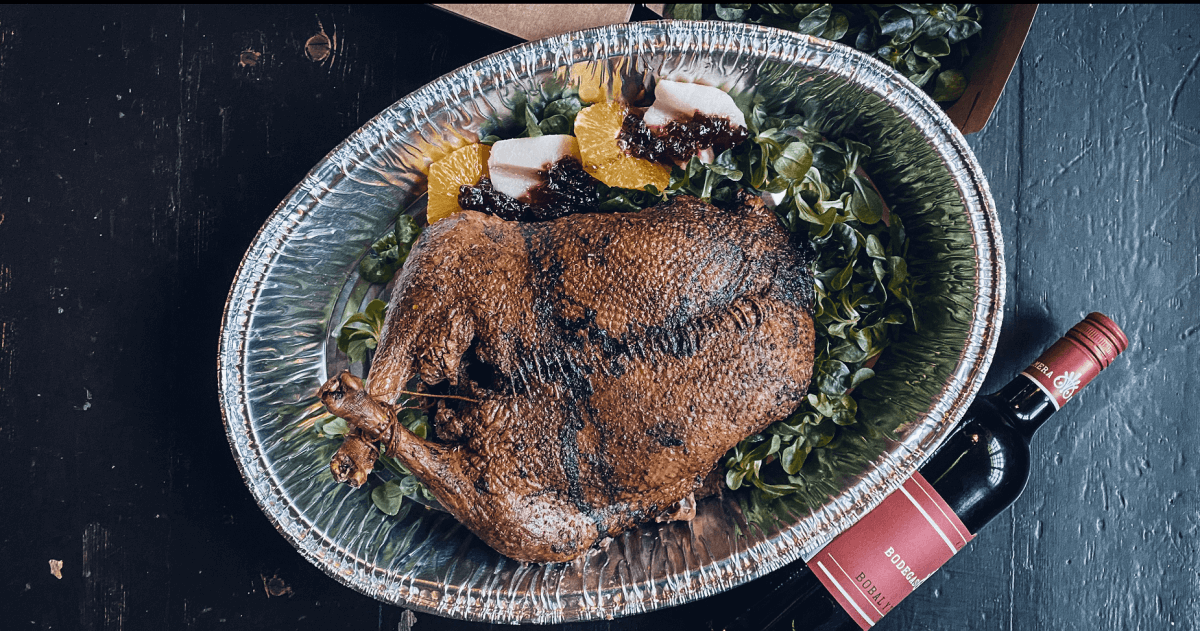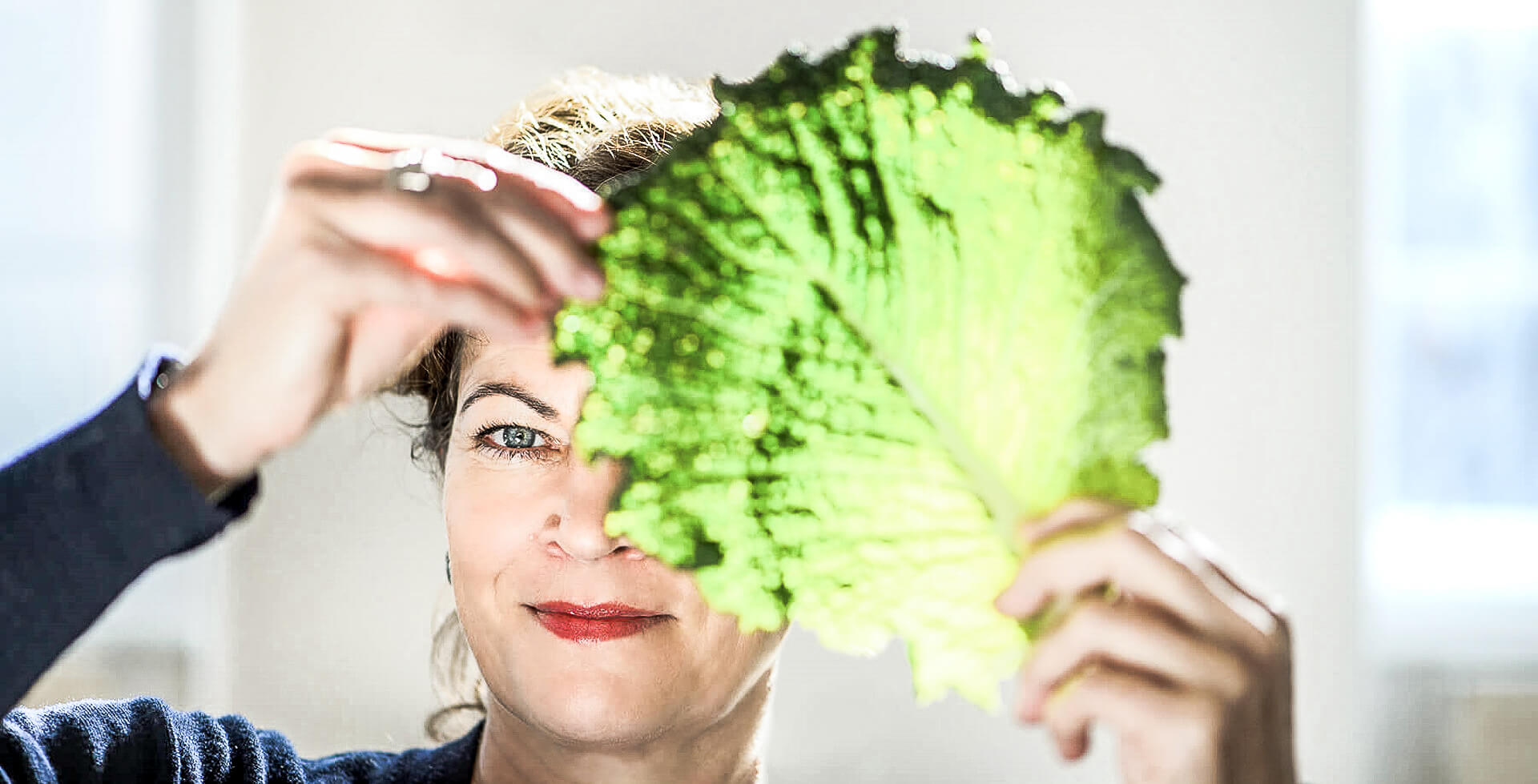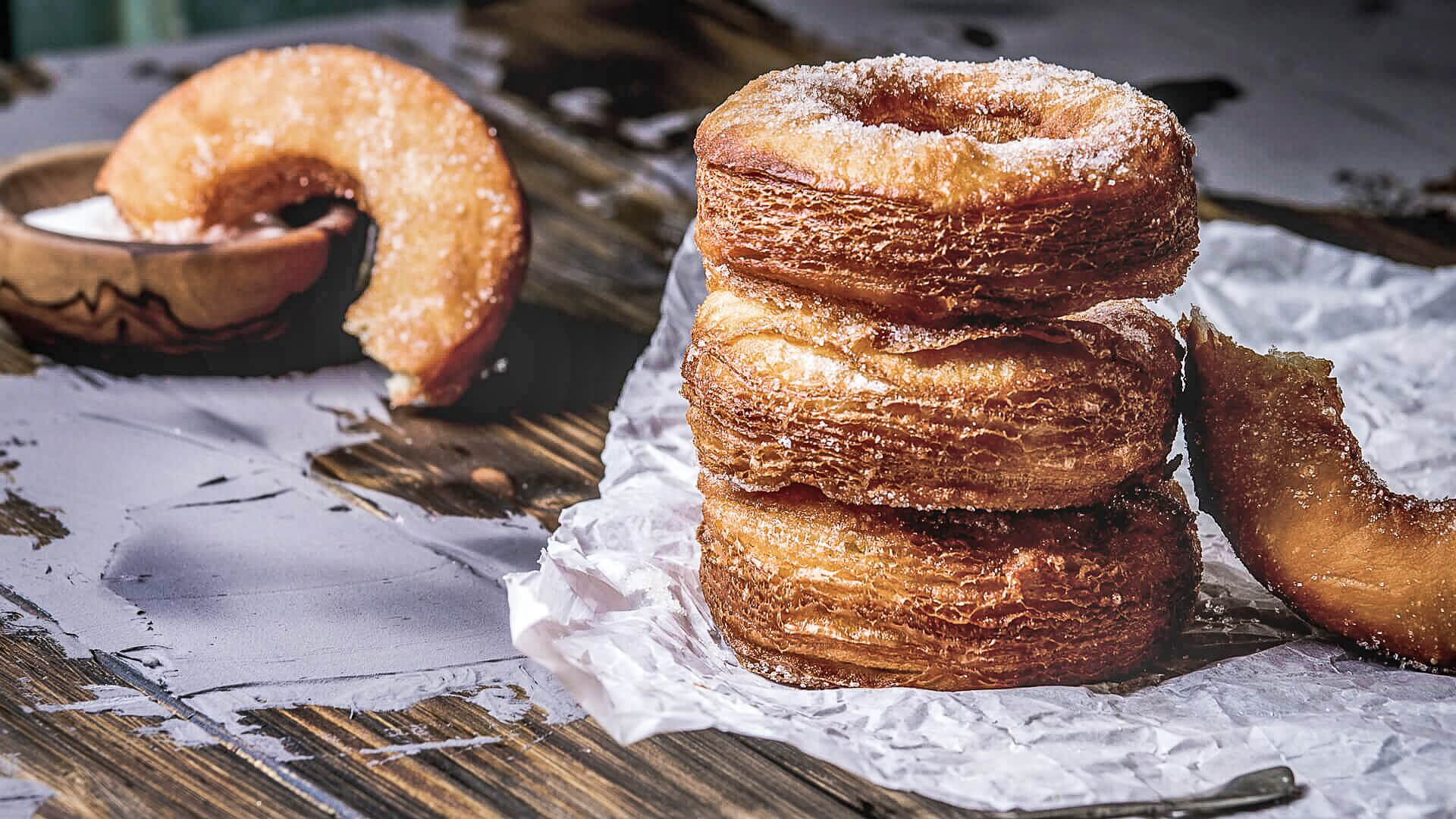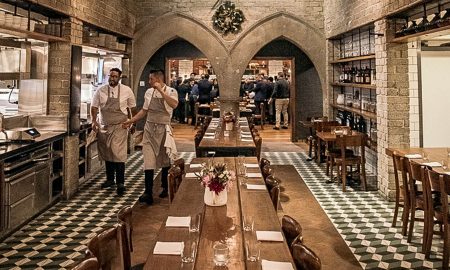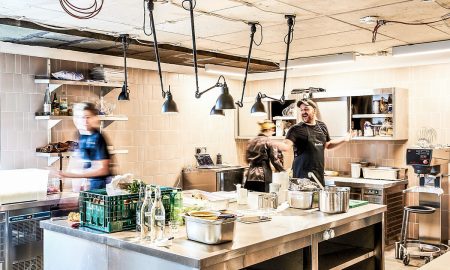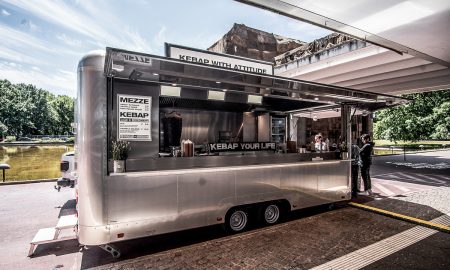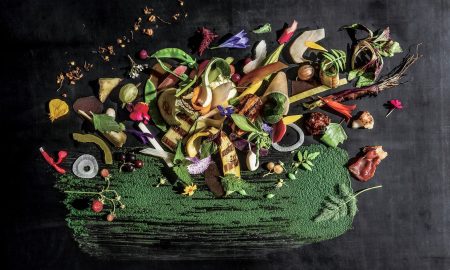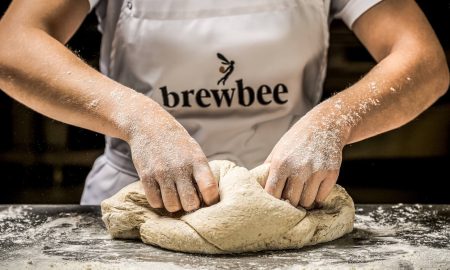A good example of this is the tried and true holiday classic, Christmas goose. This dish is roasting in fewer and fewer home ovens and is therefore at the very top of every guest’s gourmet wish list. However, it isn’t just popular to eat directly at a restaurant – this compact traditional dish is the perfect to-go order and can be easily delivered. Pros are definitely aware that offering the best quality is simply a must. The competition never sleeps and the guests’ expectations for this traditional dish raise the bar. But not to worry – with these cool tricks you’ll have it in the bag, guaranteed!
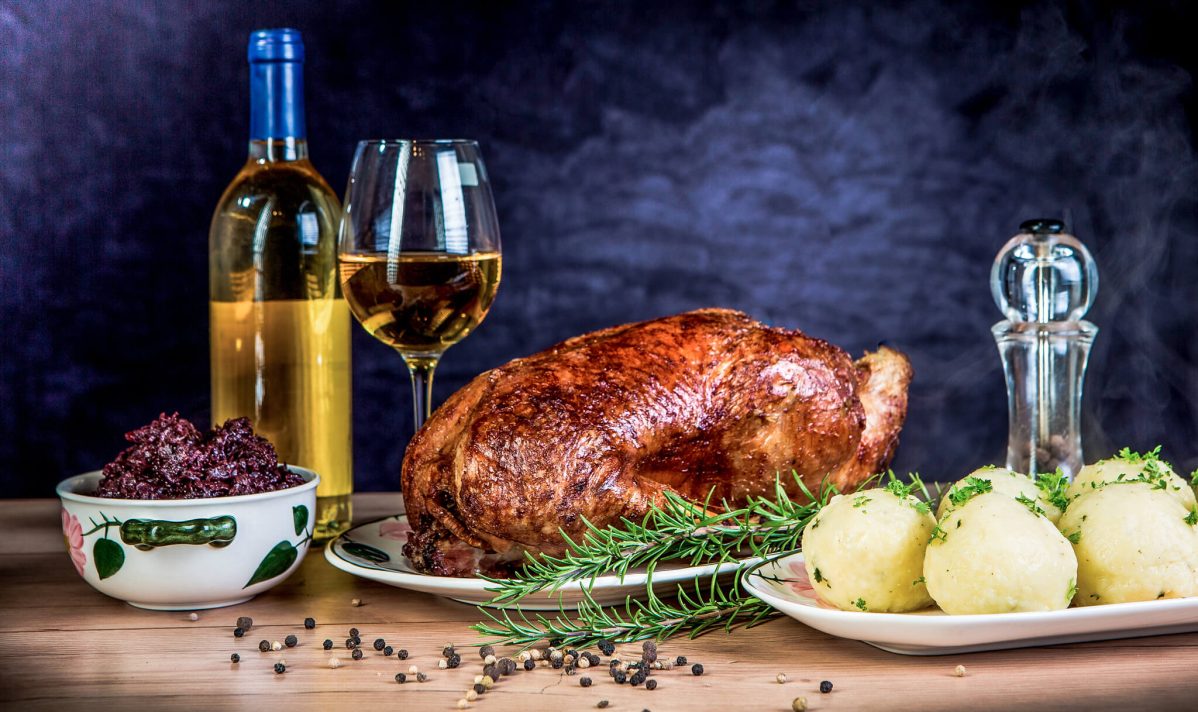
Image: AdobeStock | Heino Pattschull
Hack number one: Goose in your sleep
Can you really roast a goose overnight? With a combi steamer you certainly can with ease! A 11 lbs (5 kg goose) will become fantastically tender on the rack with a core temperature of 158 °F (70 °C) in a leisurely twelve to 24 hours. Another plus is that it is guaranteed to be free of all harmful germs, such as the infamous salmonella. If that’s a bit long for your taste, you can simply increase the core temperature. At 167 °F (75 °C) it takes only six to twelve hours and at 185 °F (85 °C) the goose is fully cooked in four to six hours. That’s also the perfect cook-and-hold solution. Only another 30 minutes to get nice and crispy on top and voilà! Do you need to store the goose to fill a future order? If you need to cook and chill, the 167 °F (75 °C) method is the way to go. You only need to brown the top shortly before serving or packing it up.
Hack number two: Goose in your sleep, part two
You don’t always have to use the oven’s convection feature, even if traditionalists believe this to be true. With the hip sous-vide technique, goose legs simply melt away, and that’s no exaggeration considering how extraordinarily delicate and tender the meat becomes. However, it should be noted that precision is key when it comes to this technique. Celebrity chef Simon Kolar, leader of the Guerilla Chefs, has developed the ultimate method based on ten years of hands-on restaurant experience.
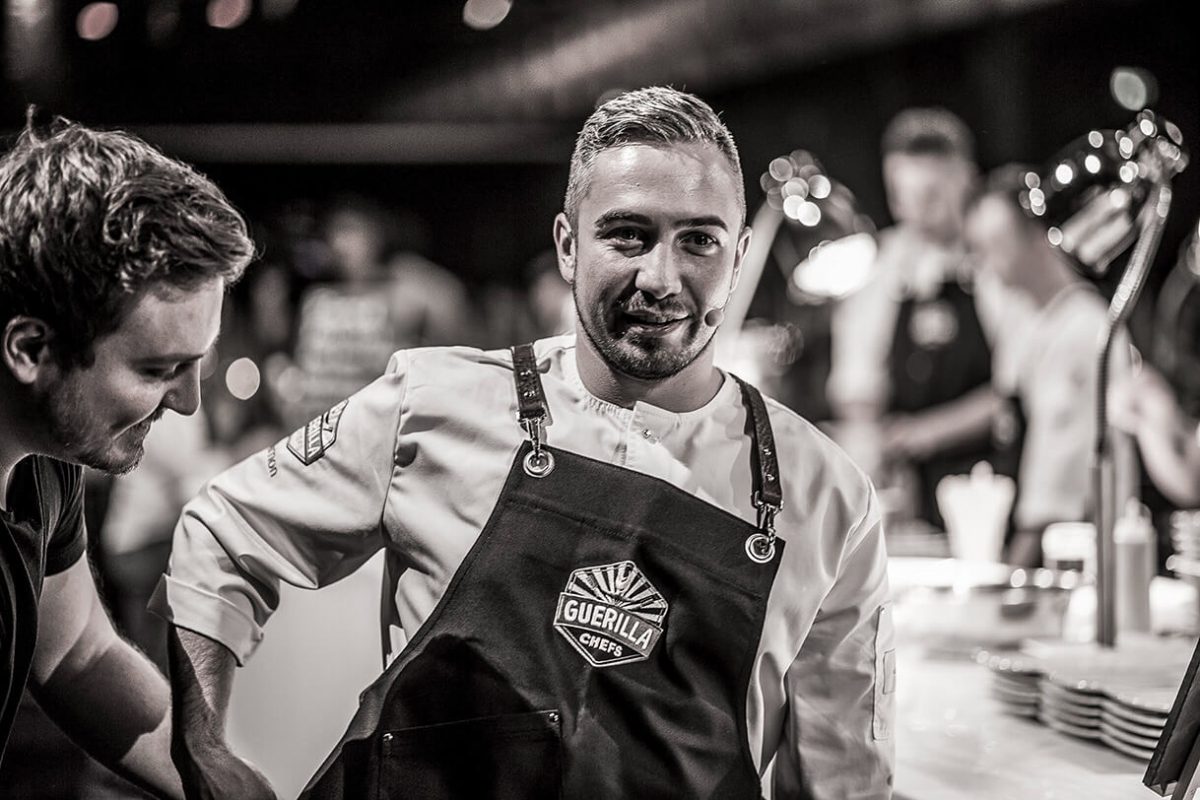
Simon Kolar | Image: Lights up Photo
“Before we cook our goose leg sous vide, we rub it with coarse sea salt and spices and let it marinate uncovered in the refrigerator. The salt changes the protein structure of the meat and ensures that it can hold more water. Therefore, the goose leg stays nice and juicy. The skin loses excess moisture, which means it will be ultimately easier to crisp up the skin. But more on this later. Let’s first take a look at sous vide cooking. This can be done using the magic formula 125/6, 176/6: six hours at 125 °F (52 °C) – this ensures all salmonella and other bacteria are safely killed – and then another six hours at 176 °F (80 °C). This process causes the collagen in the meat to break down into gelatine, which provides the wonderfully soft and tender consistency. We use the resulting juice to make the sauce.”
And the crispiness? Don’t worry, Simon Kollar has a master hack for this as well, although this one might shock traditionalists. “After it’s been cooked, the leg is simply tossed into the deep fryer. Up to now we have achieved the best results by using a separate deep fryer, which is only for our goose legs. Here’s how it works: Before deep-frying, coat the leg with corn or wheat flour, then deep-fry it at 347 °F (175 °C) for about five minutes. The muscle fibers of the meat significantly contract again, causing the skin to visibly shrink back from the ankle to the upper leg. The result is a hot, extremely juicy goose leg that literally falls off the bone. Sprinkle with sea salt before serving. I personally use Fleur de Sel or Maldon Salt Flakes.”
Hack number three: Goose inside out
Goose always stays goose, but what’s inside makes all the difference! The motto? Lots of variety, but always delicious. Rational’s Head application consulting provides inspiration for the perfect stuffing. Wolfgang Guth: “Traditionally we stuff our goose with us a mixture of fresh chestnuts, apples, stale bread rolls, goose heart and liver, onions, butter and chopped parsley, which is seasoned with thyme, marjoram, mugwort, salt and freshly ground white pepper. In the US they use potatoes, leek, thyme, parsley and lemon, and in Canada they make a stuffing from bread, black currants, apples, thyme and pepper. The English go another route by filling the bird with Brussel sprouts, bacon, celery, chestnuts, herbs and bread, whereas the French version is a stuffing made out of ground meat, apples, dried plums, onions, cloves, nutmeg blossoms, pepper and sage. However, whichever stuffing you fancy, the rules are always the same: Only stuff the goose halfway, because it will shrink while cooking. One more thing to keep in mind is that the core temperature probe belongs in the breast meat, never the stuffing.
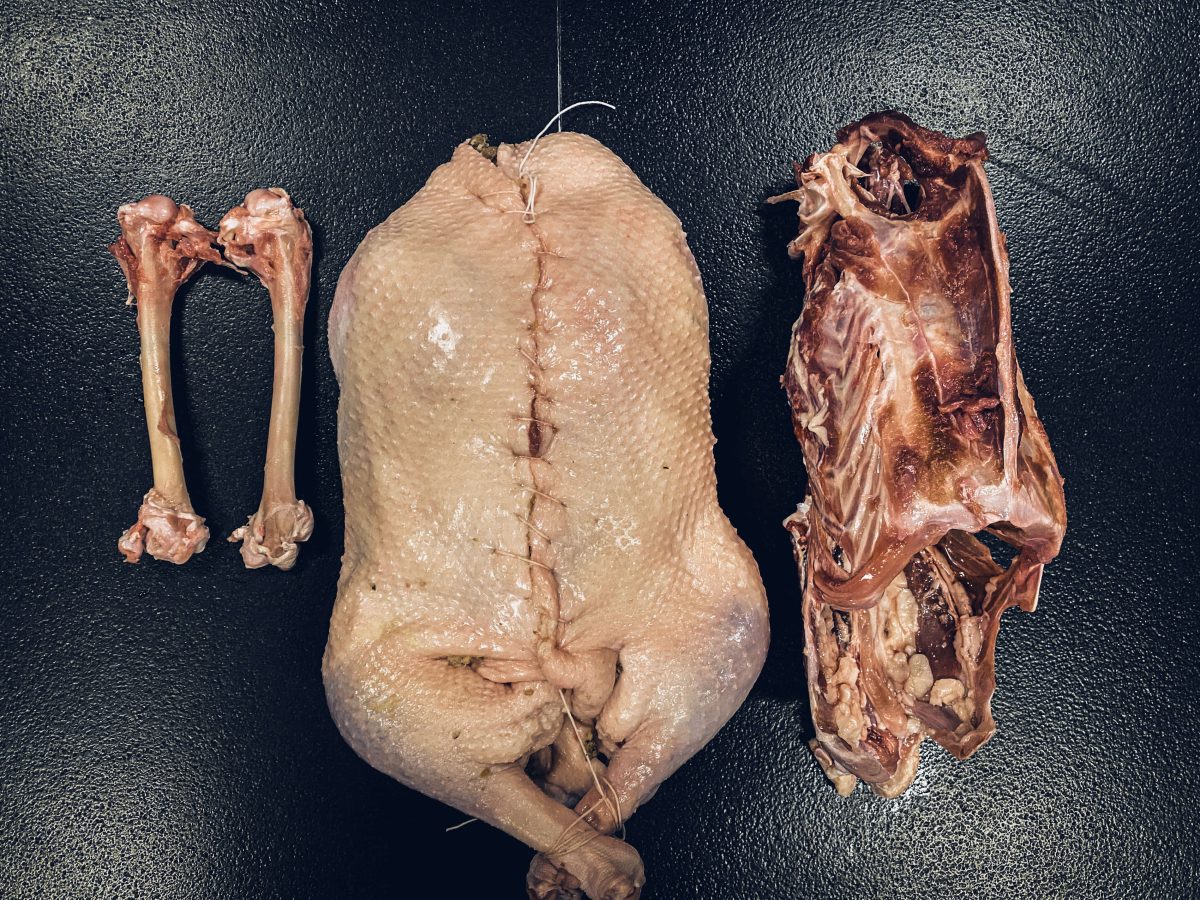
Image: Simon Kolar
Hack number four: A boneless wonder
In his restaurant Landhof in Oftersheim, Baden-Wuerttemberg, influencer Simon Kolar from the Guerilla Chefs serves up whole boneless goose. Sounds complicated? It’s supposed to! “Boneless goose has many advantages, but the biggest are the curiosity and amazement it inspires in guests,” says the expert. “Since it takes dexterity and experience to debone a goose, it create a real wow-effect!” What about the other advantages? “Serving without bones saves you time and money,” Simon Kolar stresses. “Carving is time-consuming for the staff and slows down your restaurant’s operations. However, you can cut a whole boneless goose like a roast and serve it right away. When things need to move quickly, we can get this done in two to three minutes. Carving, on the other hand, sometimes takes up to ten minutes.”
The entire boneless goose – which doesn’t really look any different than a regular goose from the outside – is cooked in the combi steamer in three steps. “First we cook them for six hours at 176 °F (80 °C) with 100% steam,” explains Simon Kolar. “In this process the goose’s skin already loses most of its fat. Steaming prevents it from drying out and gently brings it up to the ideal core temperature of 176 °F (80 °C), which is ideal for a very tender consistency. This continues for another six hours, but now in a dry heat so that the skin can dry. This is followed by another hour at 356 °F (180 °C) with dry heat and a special treatment. “Make a mixture of one part water, one part sugar and one part sea salt and pour it over the goose. Prick the skin several times with a skewer. This allows even the very last, deep fat to drain away,” Kolar explains. “After an hour you now have a wonderfully tender and yet crispy goose. The skin remains crunchy even after a delivery time of 25 minutes!” One last tip from Simon Kolar: “Without bones, the stuffing’s taste more strongly flavors the meat, so it’s better to spice it up a bit more subtly!
Although the method does not deliver the hearty taste of cooked bones, something else does. “The most attractive advantage of these boneless geese are the bones that are left over at the end,” says the seasoned chef. “We coarsely chop them up and then pop them in the freezer. Later, we roast the goose bones in the oven and then use them to cook gallons of goose sauce – it couldn’t be more efficient!”
However, the biggest question still remains: Isn’t it extremely difficult to get the bones out of the goose? With Simon Kolar’s step-by-step instructions the answer is a definite no, but let’s not tell the guests!
Bonus: Poultry a little different: Turducken
Popular in the US, turducken is a very unusual festive roast, which most likely hails from Cajun cuisine. A duck, a turkey and a chicken are deboned whole, placed one inside the other according to their size, and then stuffed with a spicy stuffing made of corn bread and sausage. The name is mixed up and intertwined just like the roast; it’s a suitcase word made up the words turkey, duck and chicken. In England they also know this dish, but they use goose instead of turkey. The name? Gooducken, of course!


